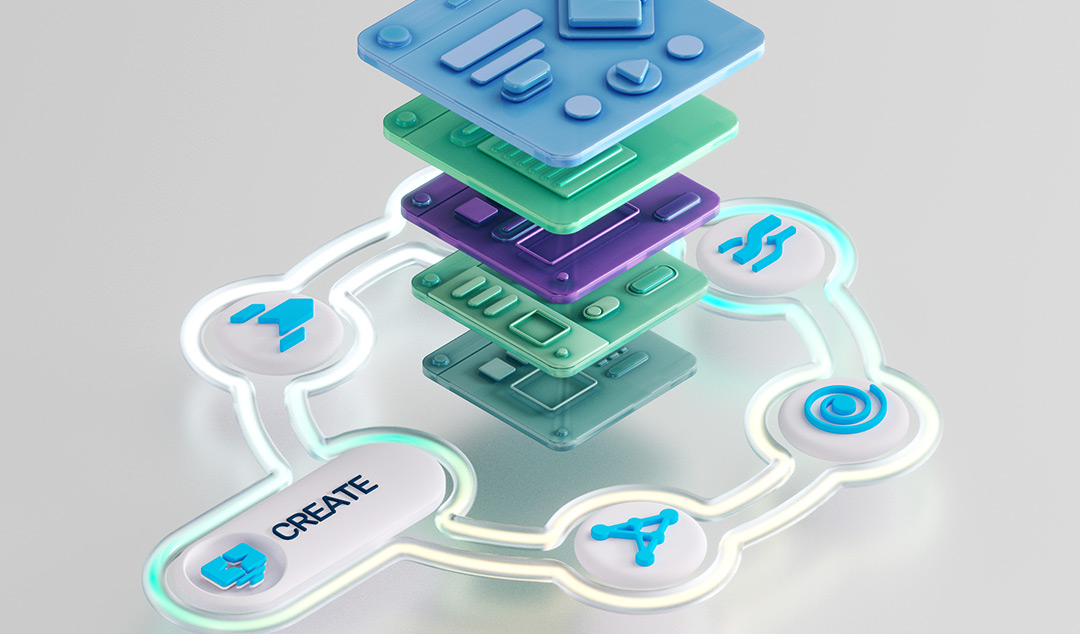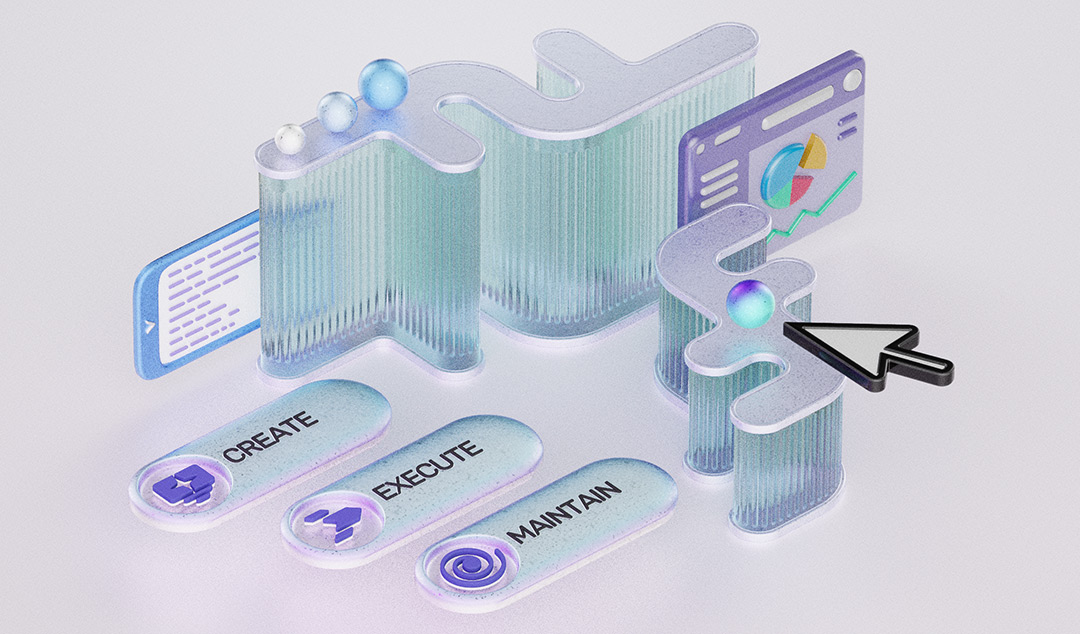From Test Scripts to AI Agents: How Context Beats Foundation Models Every Time
Foundation models fail in complex enterprise testing. Discover why context-aware, purpose-built AI delivers superior accuracy, efficiency, and ROI.

The excitement around large language models (LLMs) like those powering ChatGPT has led many to believe they are a silver bullet for all business challenges, including software testing. The hype suggests you can simply point a foundation model at your application and walk away with a test automation suite. However, the reality for complex enterprise environments is far more nuanced. While consumer-grade AI excels at general tasks, it often falls short when faced with the intricate, multi-step workflows of enterprise applications.
This post will explore the critical differences between consumer AI and the specialized, context-aware AI required for robust enterprise testing. We will break down why foundation models struggle, explain the economic pitfalls of relying on GPU-intensive infrastructure, and demonstrate how purpose-built, context-rich models deliver superior accuracy, efficiency, and return on investment. For any leader focused on driving quality for mission-critical applications, understanding this distinction is key to navigating the future of autonomous testing.
The Foundation Model Fallacy in Enterprise Testing
Foundation models are trained on vast, generalized datasets from the public internet. This makes them incredibly versatile for consumer use cases, like summarizing an article or planning a trip. An Amazon shopping cart, for instance, involves a simple, linear workflow that these models can easily understand.
Enterprise applications, however, are a different beast entirely. They involve complex, multi-page forms, dynamic data, and stateful processes that are often hidden "under the fold" of the user interface. A foundation model lacks the specific context to navigate these workflows reliably. It doesn't understand the underlying business logic, the significance of specific data inputs, or how one step influences the next. This leads to brittle tests that fail frequently and require constant manual intervention, defeating the purpose of automation.
The GPU Dependency Trap and Unsustainable Economics
A significant, yet often overlooked issue with foundation models is the underlying economics. Foundation models rely on massive, power-hungry Graphics Processing Units (GPUs) for training and inference. While this is manageable for one-off consumer queries, it becomes economically unsustainable at the scale required for enterprise regression testing.
Consider a typical regression suite of 1,000 tests. If each test involves an average of 10 steps, a single test run equates to 10,000 steps. Running this suite daily for a month results in 300,000 runs and 3 million steps. The token consumption required to process this volume through a GPU-dependent foundation model is immense and costly. This creates several problems for enterprises:
- Unsustainable Costs: The operational expense of using a public foundation model at this scale can quickly run into millions of dollars, erasing any potential ROI.
- Infrastructure Bottlenecks: Dependence on GPU availability creates performance bottlenecks, slowing down testing cycles and delaying releases.
The Power of Purpose-Built, Contextual AI
Instead of relying on a generalized model, the superior approach for enterprise testing involves using specialized, context-aware AI. At Functionize, our platform is built on eight years of testing intelligence and petabytes of real-world enterprise application data. This has allowed us to develop proprietary models specifically designed for the challenges of test automation.
Our agentic AI architecture leverages context from multiple sources to understand application workflows with a depth that foundation models cannot match. This includes:
- Network Data & Proxy Information: Understanding the communication between the client and server.
- JavaScript Console Logs: Capturing errors and events that are invisible on the UI.
- Screenshot Analysis: Visually verifying the state of the application at every step.
- DOM & Application State Tracking: Monitoring the underlying structure and data flow of the application.
This multi-dimensional approach creates a rich, contextual understanding of the application. However, context is not just about quantity; it's about quality. Too little context leads to poor results, while too much can confuse the model. The key is finding the "Goldilocks zone" of right-sized contextual data, which is only possible with models purpose-built for the task.
The Economic Advantage of CPU-Optimized Models
A major advantage of specialized models is that they are highly efficient. Our experience shows that 95-98% of testing tasks can run on smaller, CPU-optimized models. This dramatically changes the economic equation. By avoiding the GPU dependency of large foundation models, enterprises can execute testing at scale without incurring astronomical costs or facing infrastructure bottlenecks. The result is faster, more reliable testing that delivers a clear and measurable ROI.
The performance benefits are not just theoretical. In one case study, we developed a 30-billion-parameter diagnostic model trained on just 5,000 highly specific data samples. Within two days of training, this specialized model was already outperforming Claude, a leading foundation model, on specialized testing tasks. This demonstrates that for complex enterprise functions, a smaller model armed with the right context will consistently beat a massive, generalized model.
Your Path to Autonomous Testing
Making the shift from traditional methods, or even from a foundation model-based approach, to a context-aware AI testing platform requires a strategic plan.
- Build Your Contextual Data Foundation: Start by identifying the most critical workflows within your applications. Begin capturing data across multiple sources (UI, network, logs) to build a rich contextual foundation. This data will be the fuel for your purpose-built AI testing agents.
- Transition Away from Foundation Model Dependency: Instead of sending every testing task to a generic LLM, start identifying areas where specialized models can deliver higher accuracy and efficiency. Begin with high-frequency, complex workflows where the ROI of purpose-built automation will be most evident.
- Measure the ROI of Purpose-Built AI: Track key metrics such as test creation time, execution speed, maintenance overhead, and defect detection rates. Compare the total cost of ownership (TCO) of your context-aware platform against the unsustainable costs of GPU-dependent models. The results will provide a clear business case for scaling your autonomous testing strategy.
Build for the Future, Not the Hype
While foundation models represent a significant technological advancement, they are not the definitive solution for every enterprise challenge. In the complex world of software quality assurance, context is what separates fragile automation from a truly autonomous testing solution.
By embracing a strategy centered on purpose-built, context-aware AI, organizations can move beyond the limitations and economic burdens of generalized models. This approach not only delivers superior accuracy and efficiency but also provides a scalable, cost-effective foundation for innovation. It empowers teams to ensure the quality of mission-critical applications that directly impact revenue and brand reputation, turning quality assurance from a cost center into a strategic driver of business growth.











